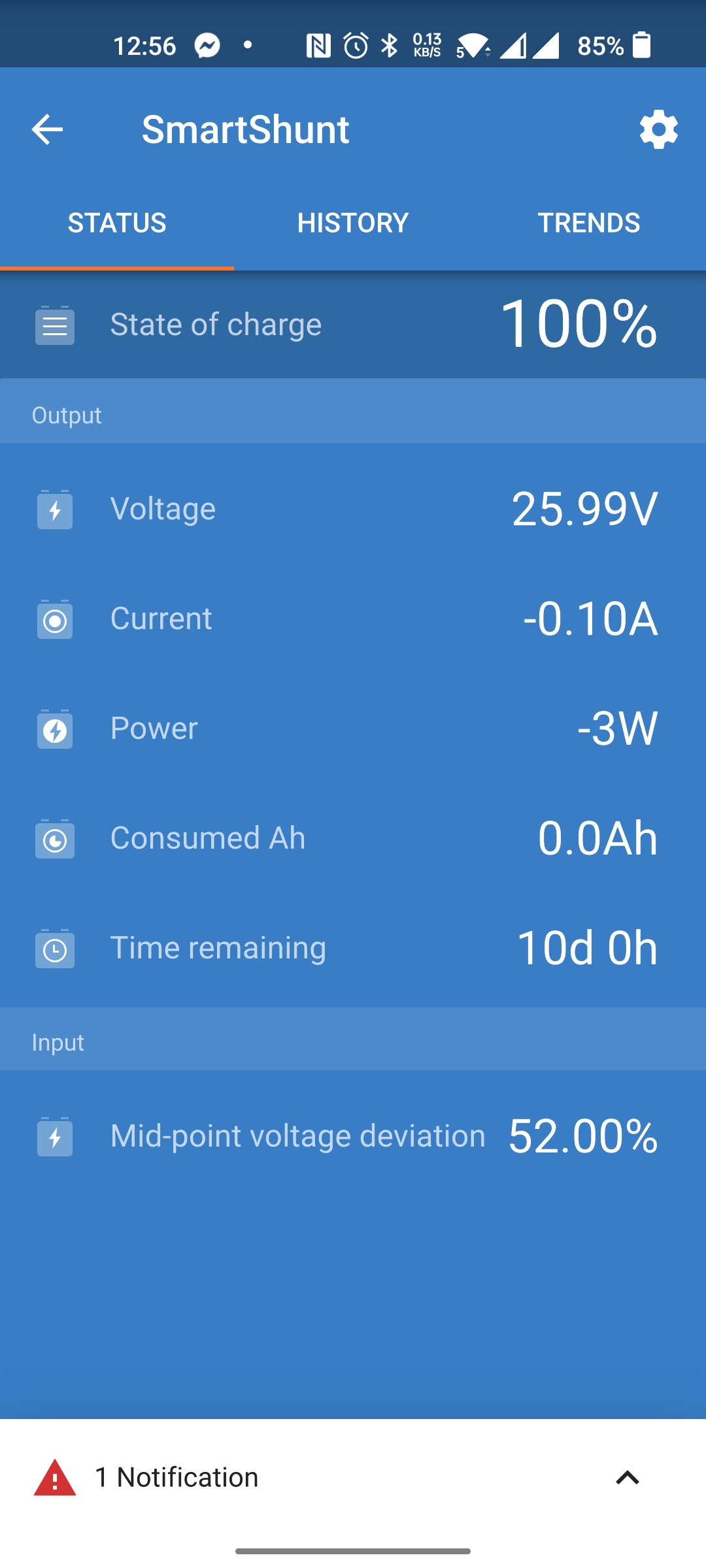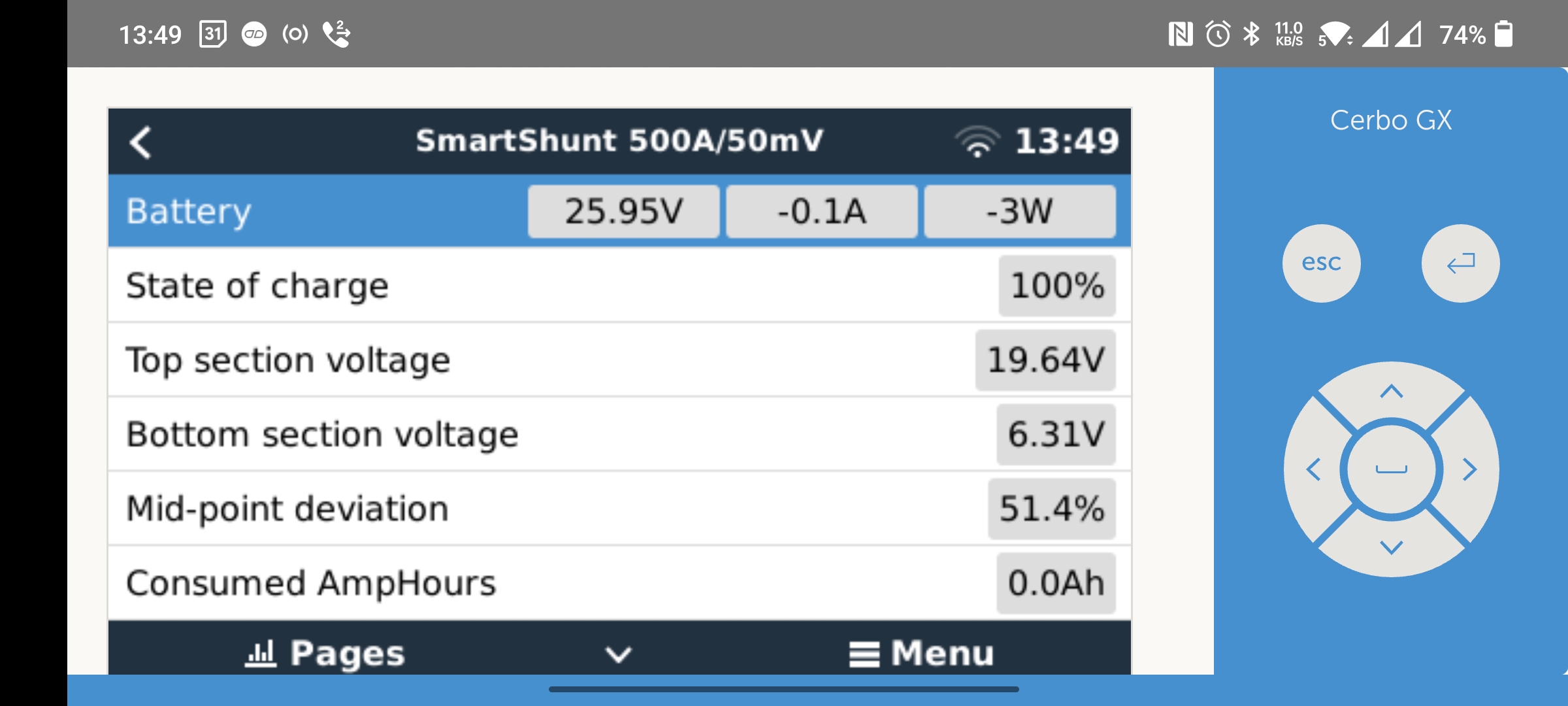Hi all,
I have a SmartShunt and 2x serial strings of 4x 6V batteries, connected in parallel, for an overall 24V.
My SmartShunt has previously been monitoring midpoint deviation flawlessly, with the alarm set to 2.0% The battery bank and SmartShunt are wired exactly as per the Victron reference https://www.victronenergy.com/media/pg/SmartShunt/en/midpoint-voltage-monitoring.html and diagram below.
After taking my system offline for manual battery charging of each individual battery, I am now experiencing an issue with the midpoint monitoring. This is suggestive of a wiring issue on my part given I took everything offline, however I have taken measurements and checked everything without avail. I cannot see the error of my ways.
The problem is that the SmartShunt is reporting a midpoint deviation of approximately 50%. Upon further examination, this appears to be because the SmartShunt is only seeing approx 6V on Aux and not 12V for the midpoint as you would expect. If I disconnect the Aux lead and measure the potential difference between the +ve terminal of battery 3 in either string and Aux, I see approx 12V as you would expect. However, as soon as I reconnect the Aux to this same terminal and measure the pd the value drops to 6V, which obviously is what is causing the shunt to report the 50 deviation (as it's expecting to see c. 12V).
I've been tearing my hair out for an hour over this and cannot see a mistake. I attach the Victron diagram showing the exact wiring and also a screenshot from Victron Connect of the shunt.
Any help very much welcomed please!



